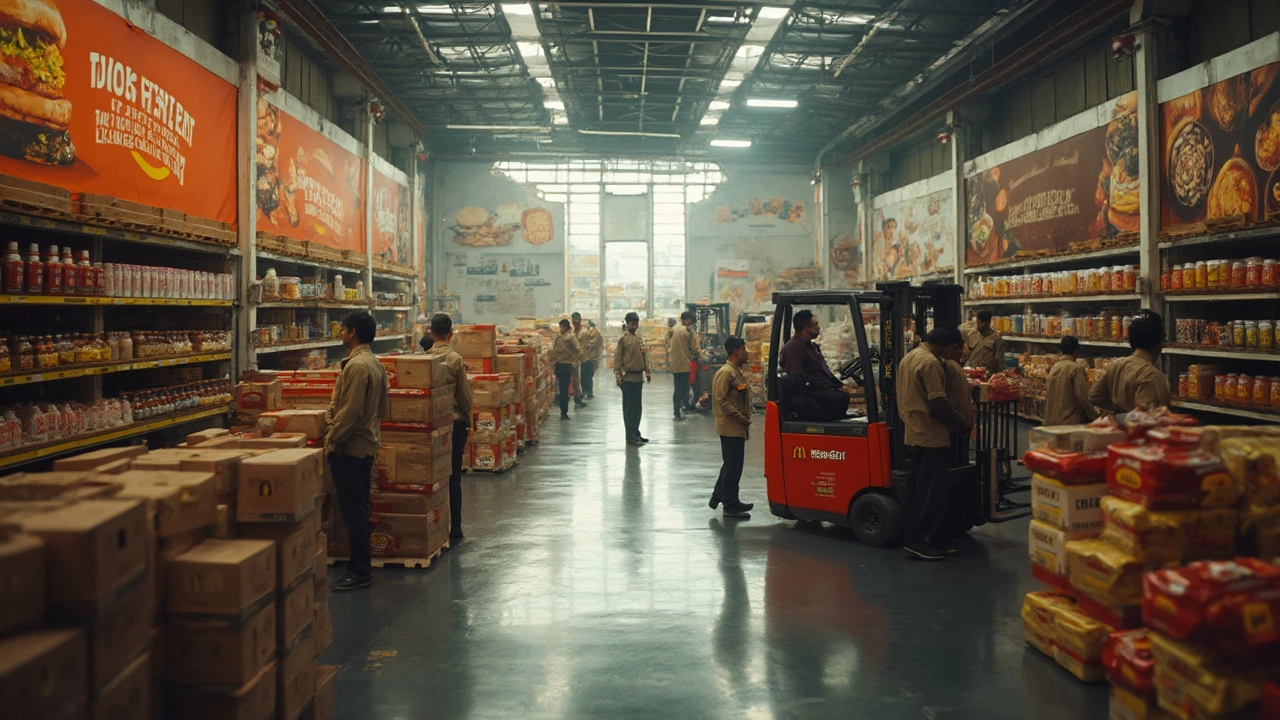McDonald's Logistics: Keeping the Golden Arches Stocked
Ever wonder how your favourite burger arrives fresh at every McDonald's outlet across India? It’s not magic – it’s a tightly‑run logistics network that moves ingredients, packaging and equipment from farms and factories straight to each restaurant. In this guide we break down the key steps, the challenges, and how a partner like StockOne Logistics can make the whole process smoother.
From Farm to Fryer: The Supply Chain Journey
First, raw materials such as beef, potatoes and fresh lettuce are sourced from vetted farms. These suppliers ship to regional distribution centers where goods are inspected, sorted and stored in temperature‑controlled warehouses. From there, the items are loaded onto trucks that follow optimized routes to reach each McDonald's outlet before the shelf‑life expires.
To keep delivery times short, McDonald’s uses a mix of dedicated fleets and third‑party carriers. Real‑time tracking systems tell managers exactly where a pallet is, so they can adjust routes on the fly if traffic or weather threatens a delay. The company also bundles orders – a single truck might carry buns for 50 stores, reducing trips and fuel costs.
At the restaurant level, a simple yet powerful inventory system tells staff when a product is running low. When the system hits a reorder point, an automatic request is sent to the nearest hub. This “just‑in‑time” approach cuts waste and ensures customers never see an empty fry basket.
How StockOne Logistics Supports Restaurant Operations
StockOne Logistics specializes in the very challenges McDonald’s faces: high‑frequency, low‑volume deliveries, temperature‑sensitive cargo, and exact timing. With a network of warehouses across major Indian cities, StockOne can store perishable items close to your outlets, slashing last‑mile distance.
Our transportation management platform matches each delivery to the most efficient route, taking into account real‑time traffic data and vehicle capacity. The result is fewer trucks on the road, lower fuel spend, and a smaller carbon footprint – a win for both your bottom line and the planet.
Another advantage is our integrated warehouse management system (WMS). It gives you a single view of stock levels, expiry dates and order history. Managers can set custom alerts for fast‑moving items like buns or sauces, so they never run out during a rush hour.
Finally, StockOne offers flexible collection services. If you need a sudden replenishment, our couriers can swing by your restaurant, pick up a pallet, and deliver it within hours. The whole process is tracked via a simple dashboard, so you always know where your goods are.
Bottom line: McDonald’s logistics success comes from precise planning, real‑time visibility and a network that can adapt on the spot. Partnering with a logistics provider that offers the same level of control – like StockOne – lets any restaurant chain keep shelves full, reduce waste and serve happy customers every day.
Does McDonald's Use Warehouses? How Their Supply Really Works
Ever wondered what keeps McDonald's kitchens running like clockwork? This article dishes out real insights on whether McDonald's uses warehouses and how their supply chain keeps up with massive daily demand. Find out what goes on behind the scenes, from frozen fries storage to burger patty delivery. Get practical facts that break down warehouse strategy in the fast-food industry. This is the inside scoop on the systems powering your late-night Big Mac.
Read More